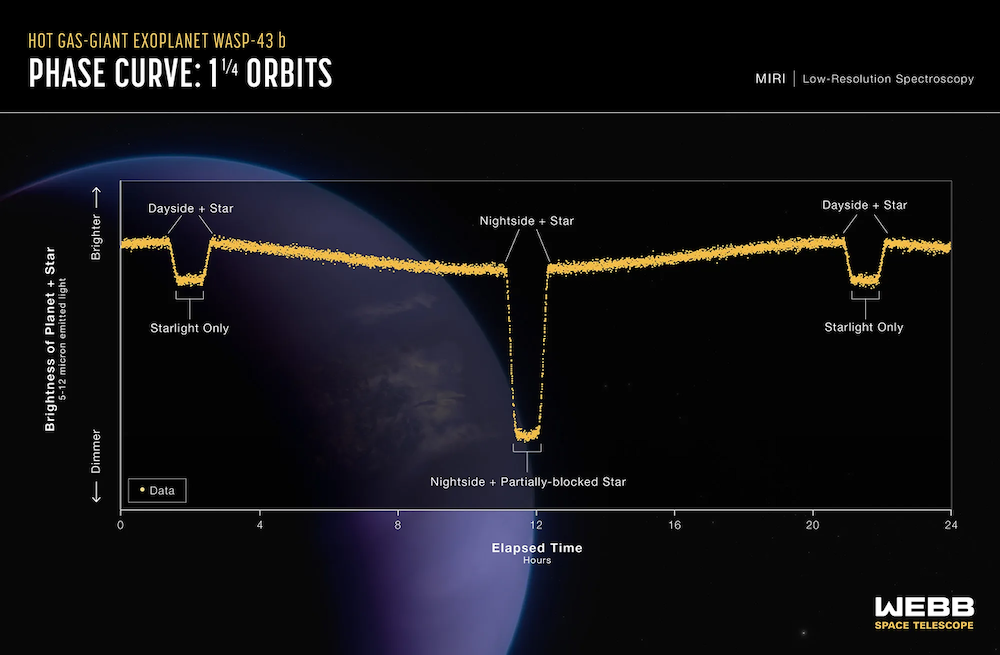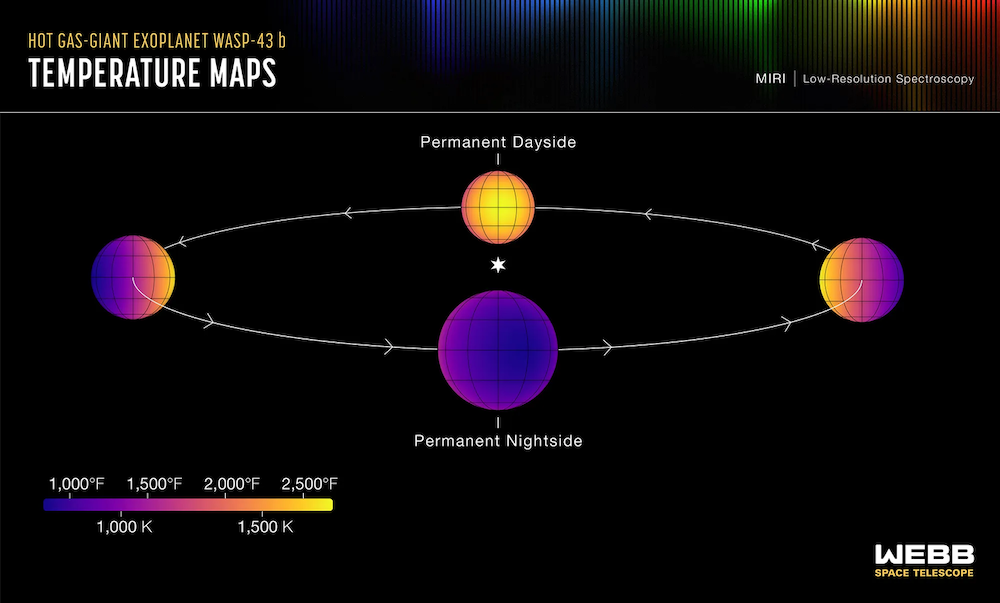NASA’s James Webb Space Telescope isn’t only snapping some of the most detailed images of our cosmos—it’s also helping an international team of astronomers determine the weather on planets trillions of miles away from Earth. Its latest subject, WASP-43b, appears to live up to its extremely heavy metal-sounding name.
Astronomers discovered WASP-43b back in 2011, but initially could only assess some of its potential conditions using the Hubble and now-retired Spitzer space telescopes. That said, it was immediately clear that the gas giant is a scorcher.According to their measurements, the planet orbits its star at just 1.3 million miles away. For comparison, that’s not even 1/25th the distance separating Mercury from the sun. WASP-43b is also tidally locked in its orbit, meaning that one side is always facing its star while the other half is constantly cloaked in darkness.

But at 280 light-years away and practically face-to-face with its star, WASP-43b is difficult to see clearly through telescopes. To get a better look, experts enlisted JWST’s Mid-Infrared Instrument (MIRI) to measure extremely small fluctuations in the brightness emitted by the WASP-43 system every 10 seconds for over 24 hours.
“By observing over an entire orbit, we were able to calculate the temperature of different sides of the planet as they rotate into view. From that, we could construct a rough map of temperature across the planet,” Taylor Bell, a researcher at the Bay Area Environmental Research Institute and the lead author of a study published yesterday in Nature Astronomy, said in Tuesday’s announcement.
[Related: JWST images show off the swirling arms of 19 spiral galaxies.]
Some of those temperatures are blazing enough to forge iron, with WASP-43b’s dayside averaging almost 2,300 degrees Fahrenheit. And while the nightside is a balmier 1,100 degrees Fahrenheit, that’s still only about 120 degrees short of the melting point for aluminum.
MIRI’s broad spectrum mid-infrared light data, paired alongside additional telescope readings and 3D climate modeling, also allowed astronomers to measure water vapor levels around the planet. With this information, the team could better calculate WASP-43b’s cloud properties, including their thickness and height.

The light data also revealed something striking about the gas giant’s atmospheric conditions—a total lack of methane, which astronomers previously hypothesized may be detectable, at least on the nightside. This fact implies that nearly 5,000 mph equatorial winds must routinely whip across WASP-43b, which are fast enough to prevent the chemical reactions necessary to produce detectable levels of methane.
“With Hubble, we could clearly see that there is water vapor on the dayside. Both Hubble and Spitzer suggested there might be clouds on the nightside,” Bell said on Tuesday. “But we needed more precise measurements from Webb to really begin mapping the temperature, cloud cover, winds, and more detailed atmospheric composition all the way around the planet.”





